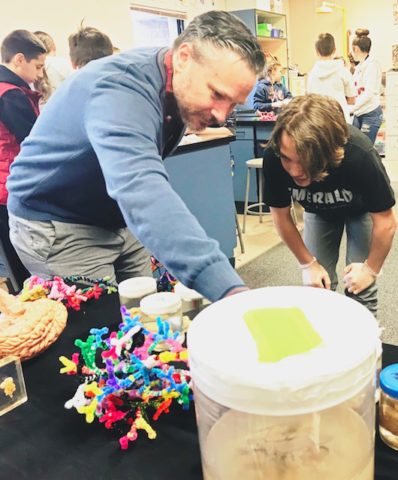Post by Aaron Eisen, NW Noggin volunteer from Portland State University
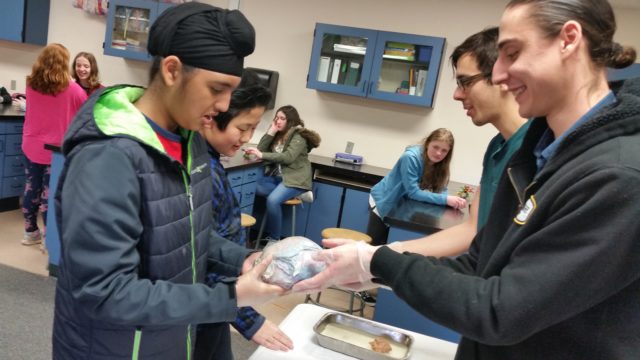
When I first learned of “NW Noggin,” the neuroscience outreach group, I had no idea what this tremendous experience had to offer. After reading about the all volunteer instructors and students, I discovered that Noggin traveled to local schools and events to share knowledge of neuroscience with the public. Traveling to public schools to discuss neuroscience sounded very intriguing. However, the exact nature of my participation was still somewhat of a mystery. I would soon discover how it was simply unfeasible to capture the raw emotions elicited by this experience in an online description.

Before I participated in the outreach group, the unknown aspects of this experience were pretty intimidating. I honestly had no idea what to expect other than “neuroscience” and “art.” I am currently taking my first course that discusses neuroscience in detail, and my lack of in-depth expertise concerned me. But I was encouraged by the wonderful members of NW Noggin to participate, even with my level of knowledge regarding neuroscience, and I am overjoyed that I did so. I soon found this experience to be without a doubt a major highlight in my academic journey here at Portland State University.

Stepping into the classroom at Skyridge Middle School in Camas, Washington for the first time as a Noggin volunteer, I made an astounding discovery. All my concerns and anxieties immediately melted away! I opened the door to a rich, warm, accepting, creative, and ambitious environment. There were enthusiastic volunteers from several universities, some with a great deal of knowledge about the brain. And the 5th graders at Skyridge were especially remarkable. Their inquiries and questions surpassed my greatest expectations.
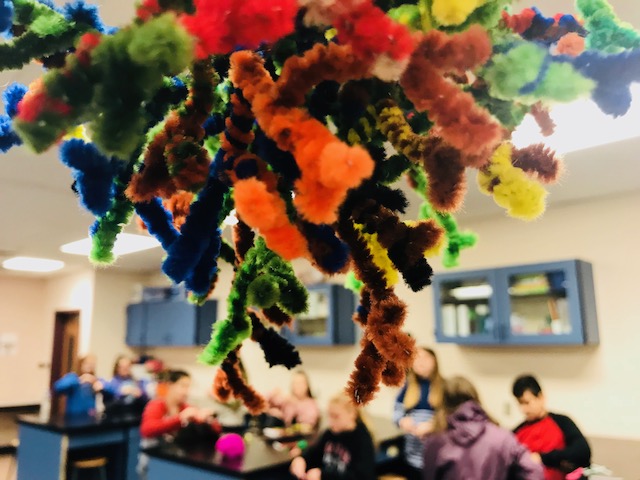
The classroom was a welcoming place, with brain-related materials all over the walls – and anyone could speak and participate. Noggin uses a beautiful blend of science and art to introduce brain cells (neurons) to students by creatively using pipe cleaners. As we twisted new dendrites, we took questions from kids that were thoughtful, kind, and demonstrated critical thinking that astounded me for their age level. There was no one right answer in this exercise. Everyone shared what they knew about the brain, absent from fear of judgment. We discussed current research, corrected misconceptions, and enjoyed communicating ideas through what students already had experience with, and understood.
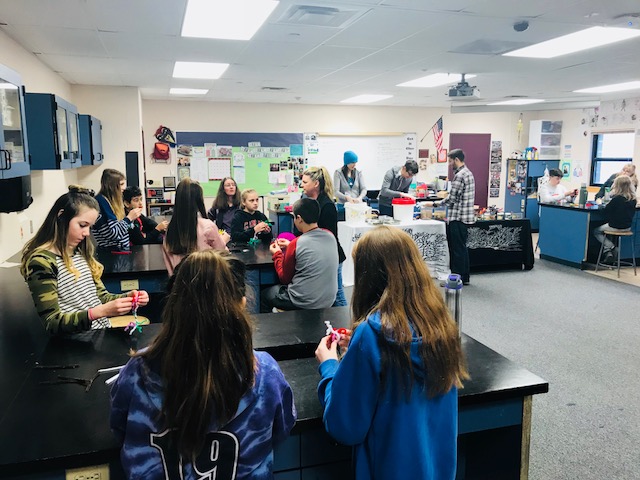
It was a nurturing learning experience for both the students and the volunteers. One of my favorite moments was when the students held our donated human brains. It was an amazing opportunity to hold a real brain in their hands (and mine!) for the first time. I really learned about the dura mater, which is a leathery outer layer that protects the brain (I touched it!), and I saw the optic nerves and optic chiasm, and began pointing out these and additional structures as the classes went on.

The student’s creativity and ideas brought me a tremendous sense of enlightenment. Their level of engagement and joy elicited such inspiration for me. They demonstrated excellent critical thinking and metacognition that extended far beyond any memorization of facts, by making things and exploring and asking questions and listening to us all collectively share our ideas. They brought up both basic and applied philosophical questions that were critical in the field of neuroscience.
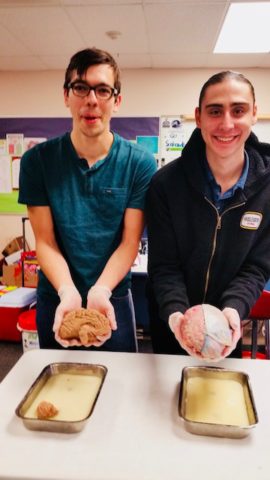
From the moment I entered the classroom, I couldn’t help but feel a smile grow across my face. That smile remained, as I could sense the enthusiasm radiating off the students, and it spread throughout the room like sunlight. I felt great throughout the rest of the day. Such an experience is good for the soul. It elicited strong emotions of certainty regarding neuroscience being my passion in this world. I greatly encourage anyone who is interested to participate in outreach and community education.
